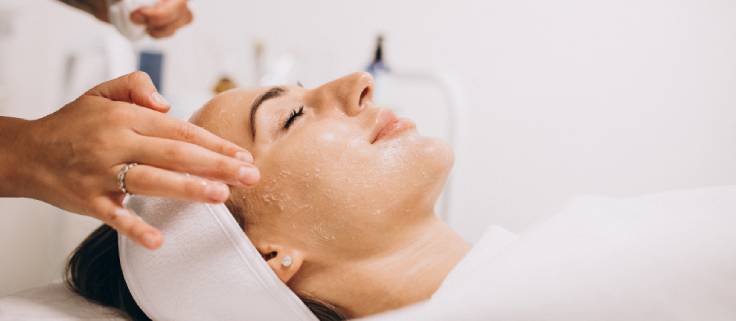- 96200 89933
- 81056 84262
- Call Us Now- 24/7 Customer Support
Get a youthful and radiant skin with chemical peel treatment at The Body Perfect Cosmetic Clinic in Bangalore. Chemical peel is a technique which involves the application of a solution which has acidic pH, in order to improve the properties of skin on face, neck and hands primarily. The solution thus applied to the skin causes it to exfoliate and eventually peel off giving way to the layer of fresh baby skin.
Chemical peels create epidermal destruction; its subsequent elimination is followed by tissue replacement through regeneration and remodeling through a controlled stage of inflammation. The new exposed skin is smoother, less wrinkled than the old damaged ones, because the layer formed freshly is a result of regenerative mode that was triggered on the skin by the solution.

Generally, a chemical peel works the best for light skinned individuals. Few things you need to check before undergoing chemical peels are:
Once the peel solution is applied on your skin, you may feel slight warmth, or slight tingling /stinging sensation which is usually well tolerated. It shows that the peels are working.
Once the intended process is completed, the acid is neutralized using water or a neutralizing solution.
Superficial peels: these may have a downtime of 2 to 7 days. The skin may initially turn dull and have visible exfoliation. Adequate moisturizing and sunscreen should help counter the dryness. Any make up if needed should be worn after 1 week of treatment.
Medium Peels: these may have a downtime of 5 to 14 days. The skin may turn dull wit slight swelling. There will be visible crusting and peeling within this period only. Eyelids may swell shut in some cases, blistering of skin can also be observed. These symptoms are completely anticipated and are normal. Your doctor would prescribe you a moisturizer, skin repair cream, face-wash regime and a sunscreen which has to be followed diligently for the optimum outcome of the peel. Sun exposure should be limited during the peeling period. Mild make up could be applied after the peeling subsides, but it is highly recommended to schedule a follow up appointment to monitor the progress made.
Deep Peels: these are more ablative than the medium peels, and may have a downtime of up to 21 days. The treated area is kept under sterile occlusion to reduce any chance of foreign particle contact. Skin need to be kept under a skin repair cream prescribed by your doctor for up to three weeks after the treatment. Sun exposure should be limited for up to six months after the treatment.
While chemical peels at The Body Perfect Cosmetic Clinic, Bangalore , utilize chemicals to act from beneath the surface after their external application, microdermabrasion physically abrade the surface so to induce the inflammation and healing triggering further collagen formation.
Microdermabrasion has a milder exfoliating effect than a deep peel and the effects aren’t very dramatic, although microdermabrasion has an advantage of having no downtime and makes it a more acceptable treatment for working professionals. Also unlike microdermabrasion, a deep chemical peel bleaches your skin and change the actual pigmentation of the skin; patients with darker skin tone would best benefit from microdermabrasion.
